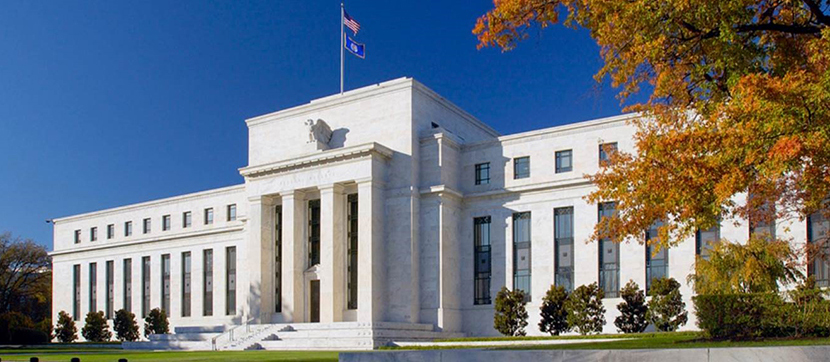
Fed Statement Cites Ongoing Risks to Growing Economy

The Federal Open Market Committee yesterday, to no one’s surprise, left the federal funds rate unchanged at 0-0.25%. But analysts, including Mortgage Bankers Association Chief Economist Mike Fratantoni, were more interested in what the FOMC had to say about economic conditions and rising inflation.
The FOMC statement was characteristically subtle. While expressing concern about the ongoing coronavirus pandemic, the FOMC also noted a strengthening U.S. economy and acknowledged inflation is rising—although perhaps not to the point of concern or action.
“The path of the economy will depend significantly on the course of the virus, including progress on vaccinations,” the FOMC said. “The ongoing public health crisis continues to weigh on the economy, and risks to the economic outlook remain.”

“Recent economic data show a rapidly improving job market and much stronger consumer spending,” Fratantoni said. “In their April FOMC statement, the Federal Reserve recognized the improving economy, but still did not hint at a near-term change in their policy stance – either for short-term rates or QE purchases.”
Fratantoni said MBA expects job growth will stay “quite strong over the next several months,” and inflation readings could rise well above what many market participants are anticipating. “It is likely that mortgage rates are going to be more volatile over this time period until the uncertainty around the Fed’s next moves are resolved,” he said.
“The April FOMC meeting statement and opening remarks from Chair [Jerome] Powell’s press conference struck a slightly more optimistic tone but did nothing to dissuade expectations that the current stance of policy will remain unchanged for months to come,” said Sarah House, Senior Economist with Wells Fargo Securities, Charlotte, N.C. “The post-meeting statement treaded the thin line between acknowledging the rapidly improving economy while remaining dovish on policy guidance.”
House added with risks to the outlook remaining, “the meeting statement again indicated that the FOMC will need to see outcomes consistent with its goals, not just forecasts. That will keep the Fed in a holding pattern for months to come.”
The full FOMC statement appears below:
“The Federal Reserve is committed to using its full range of tools to support the U.S. economy in this challenging time, thereby promoting its maximum employment and price stability goals.
“The COVID-19 pandemic is causing tremendous human and economic hardship across the United States and around the world. Amid progress on vaccinations and strong policy support, indicators of economic activity and employment have strengthened. The sectors most adversely affected by the pandemic remain weak but have shown improvement. Inflation has risen, largely reflecting transitory factors. Overall financial conditions remain accommodative, in part reflecting policy measures to support the economy and the flow of credit to U.S. households and businesses.
“The path of the economy will depend significantly on the course of the virus, including progress on vaccinations. The ongoing public health crisis continues to weigh on the economy, and risks to the economic outlook remain.
“The Committee seeks to achieve maximum employment and inflation at the rate of 2 percent over the longer run. With inflation running persistently below this longer-run goal, the Committee will aim to achieve inflation moderately above 2 percent for some time so that inflation averages 2 percent over time and longer‑term inflation expectations remain well anchored at 2 percent. The Committee expects to maintain an accommodative stance of monetary policy until these outcomes are achieved. The Committee decided to keep the target range for the federal funds rate at 0 to 1/4 percent and expects it will be appropriate to maintain this target range until labor market conditions have reached levels consistent with the Committee’s assessments of maximum employment and inflation has risen to 2 percent and is on track to moderately exceed 2 percent for some time. In addition, the Federal Reserve will continue to increase its holdings of Treasury securities by at least $80 billion per month and of agency mortgage‑backed securities by at least $40 billion per month until substantial further progress has been made toward the Committee’s maximum employment and price stability goals. These asset purchases help foster smooth market functioning and accommodative financial conditions, thereby supporting the flow of credit to households and businesses.
“In assessing the appropriate stance of monetary policy, the Committee will continue to monitor the implications of incoming information for the economic outlook. The Committee would be prepared to adjust the stance of monetary policy as appropriate if risks emerge that could impede the attainment of the Committee’s goals. The Committee’s assessments will take into account a wide range of information, including readings on public health, labor market conditions, inflation pressures and inflation expectations, and financial and international developments.
“Voting for the monetary policy action were Jerome H. Powell, Chair; John C. Williams, Vice Chair; Thomas I. Barkin; Raphael W. Bostic; Michelle W. Bowman; Lael Brainard; Richard H. Clarida; Mary C. Daly; Charles L. Evans; Randal K. Quarles; and Christopher J. Waller.”
